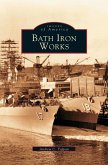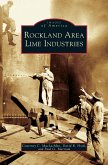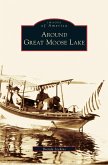Originally founded as one town, Bath and West Bath have gone their separate ways since 1844. By that fateful year, the two areas had already developed different interests and identities. Whereas the western part of town remained agricultural, the eastern part--stretched along the Kennebec River--had become active in shipbuilding and maritime trade. After their separation, eastern Bath went on to become a thriving city, while the farms of West Bath eventually mingled with summer camps and cottages. Because Bath's shipbuilding industry made a successful transition from wood to steel and from sail to diesel power, the city remained in the forefront of maritime construction-- helping to create the modern U.S. Navy, furnish fancy yachts, and build up-to-date fishing vessels. Although home to other industries besides Bath Iron Works, Bath came to consider itself "the Shipbuilding City," with its high school sports teams being known as the "Shipbuilders."
Hinweis: Dieser Artikel kann nur an eine deutsche Lieferadresse ausgeliefert werden.
Hinweis: Dieser Artikel kann nur an eine deutsche Lieferadresse ausgeliefert werden.








